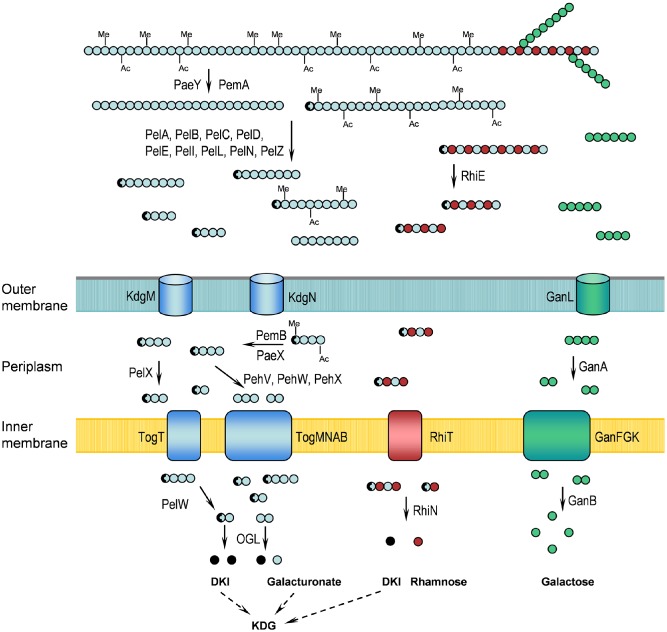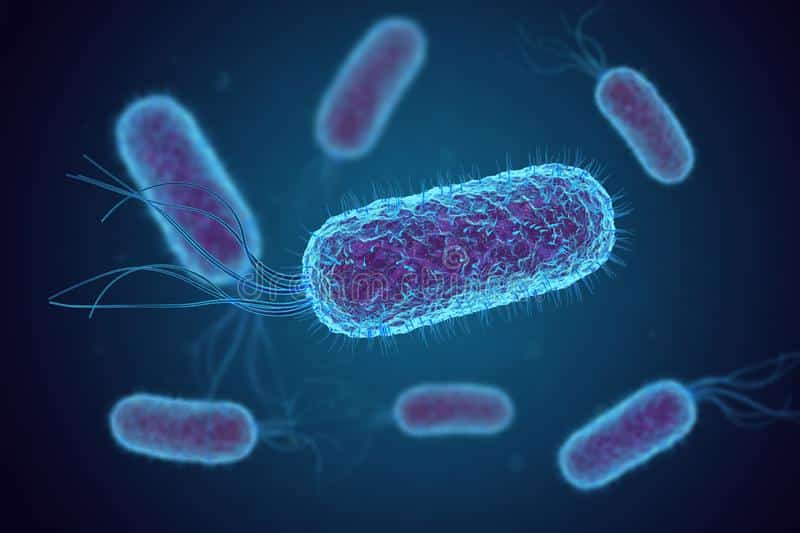Pectin is a complex polysaccharide found in plant cell walls and is widely used in the food industry as a gelling agent.
During the storage and processing of fruits and vegetables, pectin can undergo degradation, which can lead to changes in texture, flavor, and nutritional value.
The pectin degradation pathway is a complex process involving various enzymes that break down the pectin molecule into smaller units.
Understanding this pathway is crucial for the food industry to develop strategies to minimize pectin degradation and maintain the quality of food products.
Shortly, we will explore the pectin degradation pathway in detail and discuss its implications for the food industry.
What is pectin?
Pectin is a complex polysaccharide found in plant cell walls. It is widely used as a gelling agent and stabilizer in the food industry, and it can also be found in many fruits and vegetables.
Pectin is a valuable resource for biotechnologists because it can be broken down into smaller molecules such as sugars and organic acids, which can be used as feedstocks in the production of a variety of products such as biofuels and chemicals.
Bacteria secrete enzymes such as pectinases, which break down the complex structure of pectin into simpler components during the pectin degradation process.
These components can then be absorbed by bacteria and converted into energy and biomass.
Pectic degradation pathway

Pectin degradation refers to the breakdown of pectin, a complex polysaccharide found in the cell walls of plants, into smaller molecules.
Pectin degradation can occur through various enzymatic and non-enzymatic pathways, depending on the conditions and factors involved. Here’s an overview of the typical enzymatic pathway for pectin degradation:
- Pectinase enzymes: Pectinases are a group of enzymes that are capable of breaking down pectin. There are several types of pectinases, including polygalacturonases, pectate lyases, and pectin esterases, which act on different components of pectin.
- Polygalacturonases: Polygalacturonases are enzymes that cleave α-1,4-glycosidic bonds between galacturonic acid units in pectin, resulting in the breakdown of polysaccharides into oligosaccharides and monosaccharides. These enzymes can be either endo-polygalacturonases, which cleave within the pectin chain, or exo-polygalacturonases, which cleave from the ends of the pectin chain.
- Pectate lyases: Pectate lyases are enzymes that cleave the α-1,4-glycosidic bonds by β-elimination, leaving unsaturated oligosaccharides. These enzymes are typically active at a low pH.
- Pectin methyl esterases (PME): Pectin esterases are enzymes that remove the methyl ester groups from galacturonic acid residues in pectin, resulting in the production of pectate and methanol. This step is important for the subsequent action of polygalacturonases and pectate lyases.
- Oligogalacturonide formation: The action of polygalacturonases, pectate lyases, and pectin esterases results in the production of various oligogalacturonides, which are shorter pectin fragments consisting of a few galacturonic acid units. These oligogalacturonides can have signaling roles in plant defense responses and also serve as substrates for further degradation.
- Further degradation: Oligogalacturonides can be further degraded by enzymes such as β-galactosidases, α-rhamnosidases, and α-arabinofuranosidases, which cleave the remaining glycosidic bonds in the oligogalacturonides, producing monosaccharides and smaller molecules that can be metabolized by the plant.
- Non-enzymatic degradation: Pectin can also undergo non-enzymatic degradation through hydrolysis under certain conditions, such as high temperatures, low pH, or prolonged storage. Non-enzymatic degradation can result in the production of various degradation products, such as reducing sugars, acids, and other small molecules.
- Factors such as pH, temperature, and substrate concentration can affect the rate and extent of pectin degradation. Additionally, the presence or absence of other compounds, such as calcium ions or other organic acids, can influence the activity and specificity of pectinases.
Can Escherichia coli degrade pectin?

In recent years, researchers have been studying the ability of Escherichia coli to degrade pectin and its implications for biotechnology.
We will look at the role of E. coli in pectin degradation and explore the potential applications of this process.
Although Escherichia coli is not known for its ability to degrade pectin, there are strains of E. coli that have been shown to possess this capability.
The co-culturing of B. thetaiotaomicron and E. coli demonstrated moderate levels of pectin degradation activity. However, no activity was observed in pure cultures of E. coli.
Moreover, the rate of degradation was influenced by the degree of esterification of the substrate possibly by promoting B. thetaitaomicron’s activity or through inducible pectate lyase. Further research is needed to confirm these findings.
Another study achieved the secretion of a pectin lyase enzyme in E. coli BL21. This was done by fusing the signal peptide of Bacillus subtilis amylase to the N-terminal of the pectin lyase protein.
Encapsulation of the recombinant strains of E. coli in alginate beads 1:5 showed that the enzyme could degrade its substrate effectively for at least ten operational cycles.
The findings suggest that this technique may have potential biotechnological applications.
Another study looked at whether E. coli can grow on different types of pectin-containing media.
The researcher tested commercial pectic (AP) and pectins isolated from callus cultures of different plants.
They found that low methoxylated pectins, including AP, can form gels with calcium ions, and that E. coli can grow well on solid media made from standard media (MPA and MA) and AP, but not on gels made from other pectins tested.
They also looked at the effect of enzymatic hydrolysis products of specific pectin (tanacetan) on E. coli growth in liquid media.
They found that the bacteria grew better without stirring and that it grew best on a mineral medium with easily metabolized carbon sources.
The enzymatic hydrolysis products of tanacetan contributed more to the growth of E. coli than the pectin itself.
On the contrary, another study used a type of carbohydrate pectic-oligosaccharides to prevent illness caused by a Stx-producing E. coli toxin.
The researchers tested the effectiveness of pectic-oligosaccharides on human cells that are susceptible to Stx and found that a certain concentration of pectic-oligosaccharides was able to completely inhibit the toxin’s activity.
Potential applications of pectin degradation by E. coli
- The ability of E. coli to break down pectin could be used to produce biofuels from plant waste, such as fruit peels and other organic materials containing pectin.
- Pectin degradation could also be used to create valuable chemicals like organic acids, which have numerous industrial and commercial applications.
